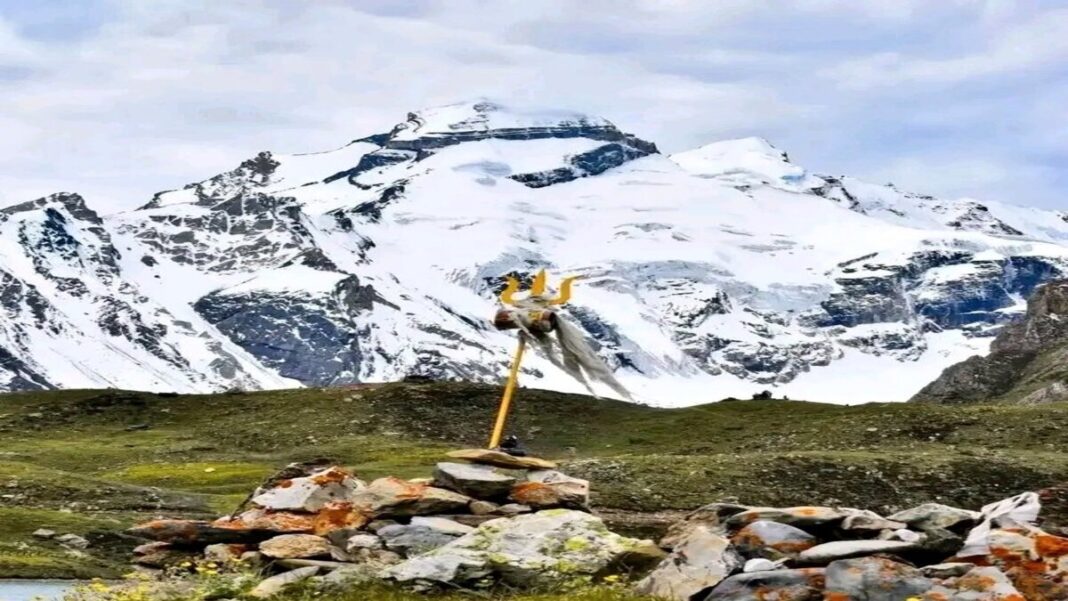INDIA: Mount Kailash, the world’s most enigmatic and revered mountain, elevates to 6656 meters. It is nestled in the Tibet Autonomous Region of China and is one of the top pilgrimage sites for Hindus, Buddhists, Jains, and Bons. It lies around the origin of four of Asia’s longest rivers—the Indus, Sutlej, Brahmaputra, and Karnali.
Lord Shiva’s home, Mount Kailash, also known as the “Stairway to Heaven,” is the most intriguing mountain range in the Himalayas. Surrounded by mountains, it resembles a majestic creation of nature with a glimpse of heaven.
Kailash Parvat—a lone peak detached from the Himalayan mountains—means “precious jewel of an eternal show.” The Prabhat, which gives you the most mesmerising spiritual experience, is encoded with many mysteries that are still unsolved.
Let me just take you virtually to the land of unsolved mysteries. There, you will learn secrets and tales that have not yet been told, as well as an unusual phenomenon that occurs daily at Kailash.
Mysteries surrounding Mt. Kailash
Does Lord Shiva reside at Mount Kailash?
Hindus strongly believe that the Adi Yogi Shiv Bhagwan resides at Kailash Parvat with his eternal spirit partner Shakti or his adored wife, Parvati ji. Most devotees who have had such experiences would affirm that God exists in the shape of Kailash and would feel that they were an audience to God on Mount Kailash.
For generations, people have been fascinated by the mystery surrounding Mount Kailash. According to adherents of the Hindu religion, Shiv Bhagwan meditated perpetually on Kailash Parvat. Since 21,000 years ago, Kailash Parvat has been Lord Shiva’s home. It is the biggest Kailash Parvat mystery.
The bridge between heaven and earth
Mount Kailash has four faces, each of which faces a different compass direction. According to the Vedas, the mountain serves as a bridge connecting heaven and earth.
The summit is seen as the entrance to heaven by adherents of Buddhism, Jainism, and Hinduism. It is thought that the Pandavas and Draupadi reached moksha while climbing the peak, with one falling off before reaching the top.
Climbing the peak is seen as sacrilege in most religions that venerate Mt. Kailash; No one is permitted to ascend the mountain because of this. Mt. Kailash had attempted to be climbed by many people in past expeditions, but they failed.
One can witness fast ageing
Those who have been to the holy mountain claim to have seen quick growth, particularly in the hair and nails. The quick ageing process is accelerated by the mountain air; nail and hair growth, which typically takes two weeks, occurs here in just twelve hours.
This is frequently linked to the presence of enigmatic energies in the region. It hasn’t been proven whether this is real or merely a perspective.
World’s central axis?
Numerous investigations by Russian and American scientists have concluded that the holy peak, also known as the axis mundi or centre of the globe, is the location of the world’s centre. It is also known as the world tree, the world pillar, the cosmic axis, and the world axis.
It is also believed to be connected to several other global monuments, including Stonehenge, which is located exactly 6666 kilometres away from the summit; the North Pole, which is 6666 kilometres away from the peak; and the South Pole, which is located 13332 kilometres away.
Mount Kailash is referred to as the world tree or the cosmic axis even in the Vedas, and the Ramayana also makes a similar reference.
Formation of Om Parvat and Swastika
Hindus believe that the mountain’s shadow, which is reported to be cast as the sun sets, closely resembles the sacred symbol known as the Swastika, which is seen as a promising sign.
Since the snow falls on the mountain and assumes the shape of Om. Om Parvat is yet another intriguing, unexplained riddle.
Constructed by divine beings?
Russian scientists believe it is not a mountain, as it is way too symmetrical and perfect to be deemed a natural occurrence. It appears to be out of place compared to the other mountains in the area.
The sides are incredibly perpendicular, giving the peak the impression of a pyramid, and the entire peak resembles a church. Some assert that it is geometrically impossible for the mountain’s steep and lofty structure to have been formed by natural geological processes. Some people think divine beings constructed Mount Kailash.
Lake’s unique shape at the foot of a mountain
At the base of the peak, two lakes—Manasarovar and Rakshas Tal—can be found. Manasarovar has a spherical shape that resembles the sun, while Rakshasa Tal has a crescent-moon shape. The two lakes, respectively, represent the positive and negative energies. Another intriguing distinction between both lakes is that Manasarovar is freshwater, while the Rakshas Tal is saltwater.
Two lakes create a unique geological phenomenon—one freshwater and the other saltwater—existing next to each other. The latter lacks any flora because of its salty composition. Despite being next to each other, Lake Manasarovar is often calm, whereas Lake Rakshastal is frequently tumultuous.
Also Read: Guru Purnima 2022: All That You Need to Know about the Auspicious Day



